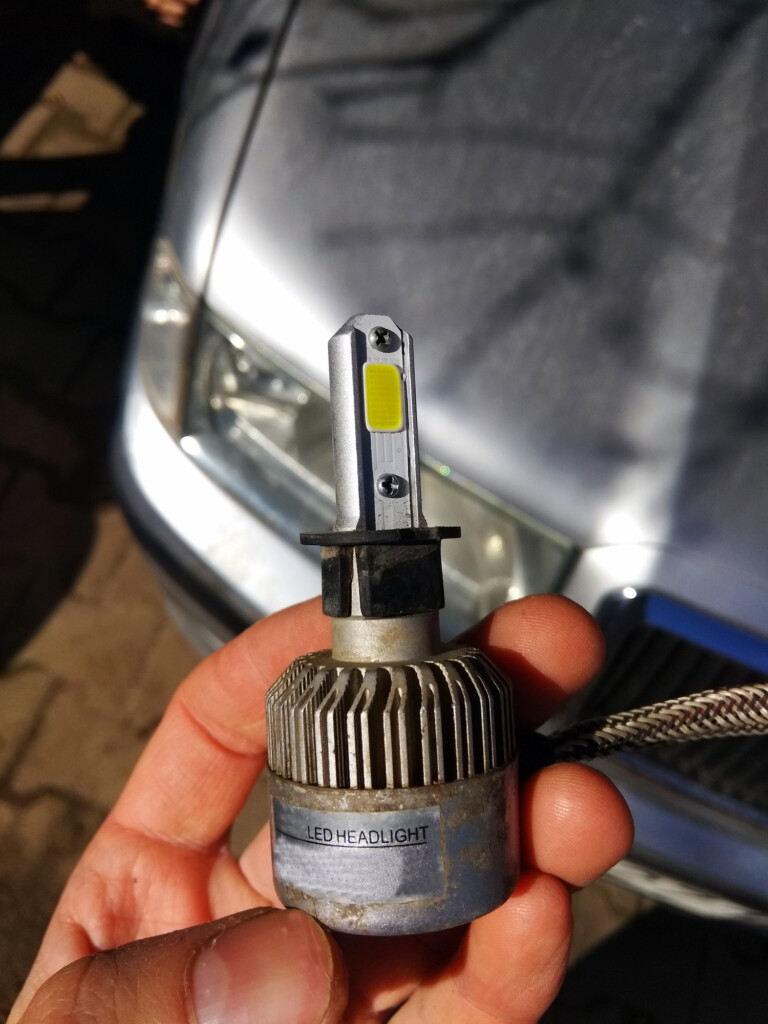According to the KöHÉM decree published in the Hungarian Gazette of December 30, from January 4 They can also be used in Hungary there will be H4 and H7 LED replacement bulbs, instead of the previous halogen bulbs. Of course, it is still not possible to use any bulbs ordered from an uncertain source, the basic requirement is to use LEDs with a certification mark.
Now let’s see how LED bulbs in cars work
In Hungarian, the acronym LED (Light Emitting Diode) means light-emitting diodes, which initially only shone with weak infrared light. Then the specialists saw the fantasy in it and began to investigate the phenomenon further. Already in the mid-1950s, it was observed that some semiconductor elements emit light during electrical excitation, but it was not until 1961 that the LED was patented.
As late as 1994, three Japanese specialists created a high-brightness blue LED, for which they later received a Nobel Prize, even though blue LEDs are a real punishment for the eyes. Despite this, people enthusiastically changed the LED in mobile phones, which is responsible for the backlight of the display, to blue, which is considered cooler than the factory, but even in the automotive industry there was a time when a dazzling blue illuminated dashboard was considered progressive. Of course the Nobel prize it was not because this blinding blue was so good, but because it opened the way to the much more exciting and much more important white light LEDs.
Such is the traditional halogen bulb.
Another big breakthrough came in 1999: it was possible to make a 1 W LED that lights up for a long time. From there, the triumph of LED was unstoppable, moving into apartments, cars and all areas of our lives.
LEDs were the first to creep into auxiliary brake lights in cars, because due to their small size, a thin strip could fit as many LEDs as they had enough light to perform the task. It is completely understandable why the use of LEDs in the exterior lighting equipment of cars started here. The brake light should flash as quickly as possible when the driver brakes, and the LED is very good at this. This can shorten the stopping distance of the next car by meters.
The usual glow-in time of filament bulbs can be forgotten in the case of LED. For example, a 21W bulb lights up completely in 0.1-0.2 seconds, while the LED lights up immediately. This doesn’t seem like a big difference at first, but at a speed of 130 km/h, the speed of an LED light can mean a shorter braking distance by meters!

At the base of the LED bulb, you can see the heatsink, in which there is also a fan in many cases.
LEDs are said to live forever, their light almost never goes out – in contrast to halogen bulbs – but this would only be true in practice if we fixed them on a large aluminum cube and operated them at 20 °C, then they would really work almost forever one LED bulb each. In the car, however, there are no such conditions, so the diode must be cooled somehow, otherwise it will quickly die out. This is done either with cooling fins or a fan. And in the latter, an LED replacement bulb lives just as long as the tiny fan can handle it with soufflé.
The operation of the LED rests on completely different foundations than that of traditional light bulbs. The essence of the semiconductor diode is that it only allows the voltage to pass in one direction, so it can be used in an extremely wide range of areas in the electronics industry, in addition to lighting. The LED is a version of these diodes specifically used for lighting, its operation can be explained very simply by the emission of photons excited by electric current. In contrast to halogens, such bulbs require lower voltage and current (to emit the same amount of light), so their consumption is much lower, thus producing less heat and their service life will be longer.
Source: www.vezess.hu


